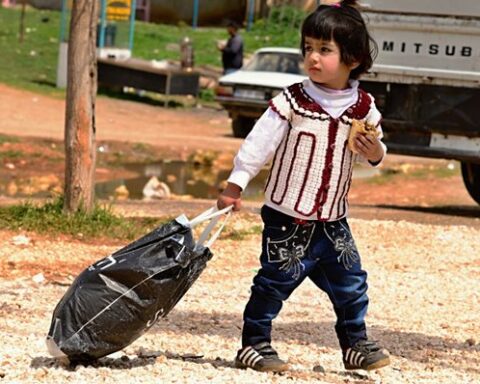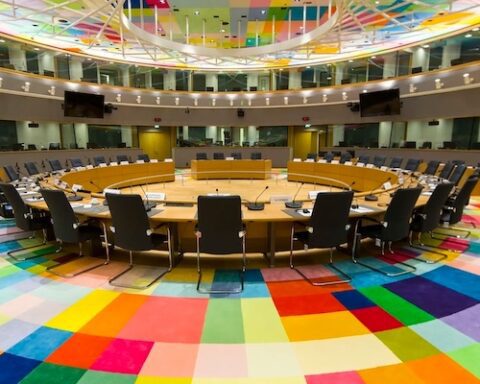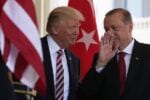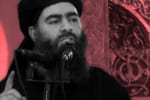Across the region, the Islamic State is being driven back.
In Iraq, the Iraqi military is pushing the Salafist Jihadist group out of Mosul. Only besieged pockets remain of this group that just a year ago controlled vast amounts of land.
In Syria, the Kurdish-Arab coalition known as the Syrian Democratic Forces (SDF) has breached the outer walls of al Raqqa, the so called capital of the Caliphate, and is presently engaged in fierce street fighting as they push towards the city center.
Raqqa's sky lightens up as US(-led) fires ammunition above IS's largest remaining stronghold. The Syrian city is encircled by SDF. pic.twitter.com/N6WPEZYerP
— Christiaan Triebert (@trbrtc) June 8, 2017
U.S. backed ground forces have created several beachheads, pushing through the outer perimeters of the Islamic State’s defensive positions in al Raqqa City. Now a fierce building to building battle is raging, and the price is high. The Islamic State is not surrendering an inch, and appears to be completely without a military stratagem that calls for tactical retreats. Instead the jihadist fighters try to keep every inch of the city that they call their capital.
Different perspective of the same incident. Munition allegedly dropped above Raqqa's eastern neighbourhoods. Source: https://t.co/FGhBUqyQ6M pic.twitter.com/iKWzgpfAzl
— Christiaan Triebert (@trbrtc) June 8, 2017
(US fighter planes over al Raqqa City providing air support to advancing SDF units)
The SDF first established a beachhead into the city through the al Meshleb suburb on June 5th, made possible by intense aerial support against known Islamic State positions in the neighborhood for two days. The attack was carried out by using Toyota Hiluxes for speed, and American provided armored Humvees for burl. Despite the enormous, and unceasing, air support by the coalition – the casualties to establish the beachhead are described as ‘heavy’.
Once the al Meshleb beachhead had been established, the frontline troops split into two advance parties, with one advancing towards the Harqal citadel area, 2 kilometers from the actual al Raqqa city limits. Inside the citadel the SDF established their first forward operating base inside the greater al Raqqa city area. The base of operations was set up in some of the older buildings inside the citadel courtyard. The older buildings were deemed best suited to withstand direct mortar strikes, to coordinate the push towards the al Raqqa city center. The Islamic State has since been striking the base perimeter using mortar rounds.
The secondary unit advanced towards the former Syrian Arab Army division 17 military complex above al Raqqa, to the north of al Meshleb, where the Islamic State had established a stronghold inside reinforced buildings. The capture of the military complex was deemed essential. If Islamic State forces were able to hold on to it, it could be used to launch a counter offensive, possibly strike the advancing SDF unit’s rear. Advancing SDF units quickly found that the area was heavily mined, with at least three buildings haven been proven to have IED’s built into the walls, which detonated as SDF forces advanced towards the complex. At least three humvees have reportedly been buried under collapsing buildings.
Western coalition air assets have been continuously striking the complex perimeter for 24 hours to soften the defensive perimeters before a ground assault could take place. At 2000 hours, 8 PM, local time, June 8 the assault began.
Islamic State forces fell back to defensive bunkers after the initial onslaught. Throughout the night, SDF units and the Islamic State fighters fought a building to building battle. By 0400, the battle had moved to the sugar factory adjacent to the military base complex. By 0700, the SDF command was able to announce that the sugar factory had been captured.
https://twitter.com/AfarinMamosta/status/872861963369541632
(YPG Special Forces units prepare for the attack on al Furqon.)
The al Meshleb units are slowly advancing, having begun to breach the outer defensive perimeters of al Raqqa City. On the morning of June 9th, SDF forces began pushing through the al Furqon district’s defensive perimeter. Losses on the SDF side are reportedly in the upper double digits throughout the morning, and are expected to rise.
At 0730 local time, an Islamic State up armored Honda Civic Suicide Vehicle Bourne Improvised Explosive Device (SVBIED) drove into the advancing SDF forces, and detonated. The SDF does not give official casualty numbers, but reports indicate that the number of dead were 12.
At this point, observers are providing careful optimism over the al Raqqa advancements. This is unlike early predictions when the Mosul offensive began in October 2016, where observers and politicians alike believed the Islamic State’s positions could be captured within weeks. That battle is still ongoing, albeit seemingly the back of the beast has been broken and the Islamic State retains only a few square kilometers of actual area.
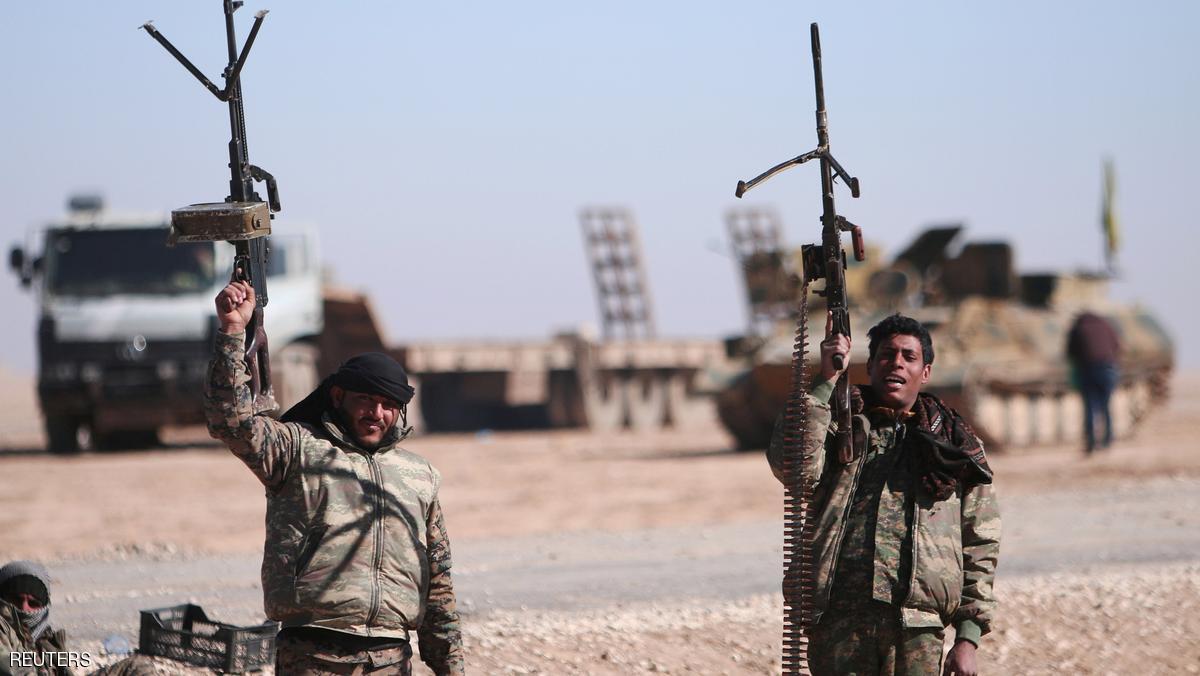
Brett McGurk, U.S. envoy for the global coalition against the Islamic State stated, during a Baghdad press conference, that the U.S. and the SDF have prepared for a protracted battle for al Raqqa. “The Battle for Raqqa might very well be a difficult and very long term battle,” said Mr. McGurk.
Anti-ISIS coalition air assets and Russian Air Force operating in the area, strike trucks and groups of Jihadist fighters that dare attempt to flee the falling Caliphate sanctum. The majority of the retreating fighters are trying to head towards Deir Ezzor, or Deir al Zour, where the Islamic State has been fighting Syrian and Iranian ground forces for the past year, but still have several strongholds. The city is the largest urban center in eastern Syria, and is located between Raqqa and the Iraqi border.
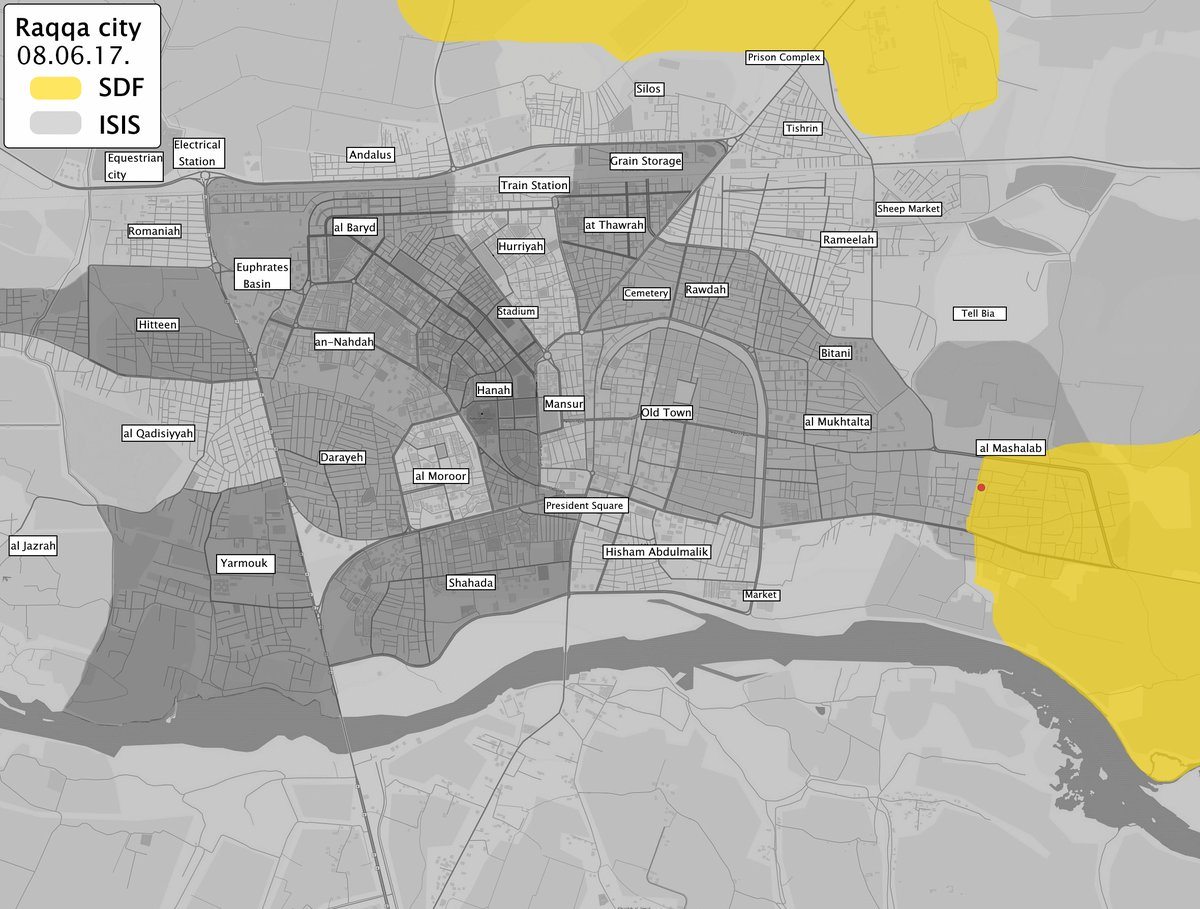
Two weeks ago, the Islamic State leadership was reportedly able to escape al Raqqa, despite a People’s Protection Units (YPG) Special Forces unit giving chase after intelligence reached them, provided by American advisers, of the plan. Outside of Mayadin, the unit intercepted the convoy and attacked. Air asset support was restricted, due to availability to two drone units. A large number of the trucks carrying leadership individuals were able to escape and evade the attack, but a drone struck an escaping blue Toyota Hilux 2.4D 2004 pickup truck. Inside the truck the body of Turki al-Binali – the Islamic State’s chief ideologist – was found. Turki al-Binali, was born as Abu Sufyan Al-Silmi in 1984, in Muharraq, Bahrain, to a wealthy and important Sunni family with close ties to the Bahraini ruling class. Al-Binali had replaced Abu Muhammad al-Adnani, who was killed by a US air strike on August 30th, 2016 in al Bab, as the Islamic State’s chief ideologist. Al-Binali’s death leaves the Islamic State without an even remotely acknowledged ideologist in its leadership.
Despite intense air support, a large number of the Islamic State’s leadership and its fighters have reportedly been able to escape to Deir Ezzor. Throughout the week, the attempted exodus of jihadists to reach the alternative frontline of Deir Ezzor, has peaked. The Islamic State leadership still holds some faint hope that it can hold its ground there and regroup. A belief that is being shredded by the second, as Iranian-Syrian ground forces are dismantling the Islamic State fall back positions with the brutal efficiency.
Foreign fighters will not survive the fight to return home to North Africa, to Europe, to America, to Asia, to Africa.
-U.S. Defense Secretary James Mattis
The securing of Deir Ezzor serves as a vital appeasement by the Syrian regime’s allies, Iran and Russia, because of its oil richness. Whoever helps secure it, and hands control of it back to the Syrian regime, will be in good standing. As such, Iran ordered its proxy militia, chiefly Hezbollah and affiliated forces, to deploy to the area alongside ‘advisers’ from the Iranian Islamic Revolutionary Guard Corps (IRGC). IRGC Major General Qasem Soleimani, commander of the elite Iranian Quds Force, has been seen near the Deir Ezzor frontline.
U.S. Defense Secretary James Mattis stated in a late May interview that the U.S. had switched from a strategy of attrition, to one of annihilation, against the Islamic State. “Foreign fighters will not survive the fight to return home to North Africa, to Europe, to America, to Asia, to Africa.” The Islamic State has pointed out that the aggressive use of aerial assets in al Raqqa has resulted in mass civilian casualties. Reportedly upwards of 40 civilians have been killed in the past week. As SDF units advance further into the Islamic State’s sanctum in al Raqqa, the fighting will intensify, and further civilians will become collateral. In that same interview, Mr. Mattis recognized this reality and stated that civilian casualties are “a fact of life in this sort of situation.”
The London-based monitoring group Syrian Observatory for Human Rights, stated on June 8th that a coalition airstrike had struck a van traveling outside al Quria village, killing 13 civilians. Omar Abu Leila, an activist from Deir Ezzor, said that 9 people were confirmed dead in the strike. Al Quria village is located outside of Deir Ezzor, and is largely controlled by the Islamic State.
End Game
Amid the advancement by the SDF, carrying the brunt of casualties and victories in al Raqqa, and the Iranian-Syrian-Russian de facto coalition in Deir Ezzor, Ankara has looked on with weary eyes. Raqqa’s liberation by the SDF causes grave concern for Turkey, as it will further reinforce the Kurdish (which makes up more than 85% of the SDF force numbers) intent of establishing a semi-autonomous region along the Turkish border. Binali Yildirim, the Turkish Prime Minister, stated that Turkey “will immediately give the necessary response if we come across a situation in Raqqa or any other point in the region that threatens our security“.
The Kurds in turn have stated on multiple occasions that they perceive a conflict with Turkey will arise soon after they have managed to liberate the area from the Islamic State. The U.S. is attempting to avoid such a situation inflaming further, inclined towards supporting the most effective force available to fight the Islamic State, i.e. the Kurds.
It is important to understand, however, that whereas the fall of Raqqa will bring an end to the physical definition of the Islamic State’s caliphate, it will not end the ideology or terror inherent in the organization. As the Islamic State’s strategic existence becomes increasingly endangered, it will become more aggressive in striking out and inspiring terror throughout the world. The Iranian attack earlier this week is evidence of the group’s aptitude to perform terrorizing acts of irregular warfare.
Guerrilla warfare is where the group has its roots. In the desert wastelands of failing dictatorial states, the group – along with the likes of al Qaeda – has festered and grown. It was the chaos of the Syrian civil war that made it possible for the group to emerge as a truly dangerous separate entity from its parent organization, al Qaeda, which the Islamic State’s leadership considered too moderate. That chaos will remain despite the fall of the Islamic State’s caliphate, as the civil war will continue to surge for years to come.
The same overall situation remains in Iraq as well. The spill over of the Syrian conflict, and soon the emergence of a Turkish-Iraqi-Kurdish conflict, will continue to fuel the existence of groups like the Islamic State throughout the region.
Iraqi forces have been greatly successful in recent years at taking the battle to the insurgent’s strongholds, liberating Tikrit, Ramadi, Fallujah, and various smaller towns. Yet the same cannot be said about Iraq’s neighbors who struggle to find a way to combat their domestic militia problems. When the Iraqi military does secure Mosul, pockets around the area will remain. Near Kirkuk, in Hawija, and the remote towns and desert areas of the Anbar province, remain refuges for the Islamic State in Iraq. Clearing these pockets of resistance may be a fairly straight forward task in the military sense, but dealing with the ideology and support that the group, and groups like them, enjoy is a different matter. The group has substantial support among the disenfranchised rural Sunni populations across the region.
The expected emergence of a digital-realm, inspired as well as embodying the totalitarian belief system, of the Islamic State caliphate is well underway. With its Salifistic and Wahabistic ideology and theology, it will continue to focus on taking the battle to the habitat of soft targets across the world.
John Sjoholm, Lima Charlie News
John Sjoholm is Lima Charlie’s Middle East Bureau Chief, Managing Editor, and founder of the consulting firm Erudite Group. A seasoned expert on Middle East and North Africa matters, he has a background in security contracting and has served as a geopolitical advisor to regional leaders. He was educated in religion and languages in Sana’a, Yemen, and Cairo, Egypt, and has lived in the region since 2005, contributing to numerous Western-supported stabilisation projects. He currently resides in Jordan. Follow John on Twitter @JohnSjoholmLC
Lima Charlie World provides global news, featuring insight & analysis by military veterans, intelligence professionals and foreign policy experts Worldwide.
For up-to-date news, please follow us on twitter at @LimaCharlieNews
In case you missed it:

](https://limacharlienews.com/wp-content/uploads/2017/06/Syria-Raqqa-main.jpg)

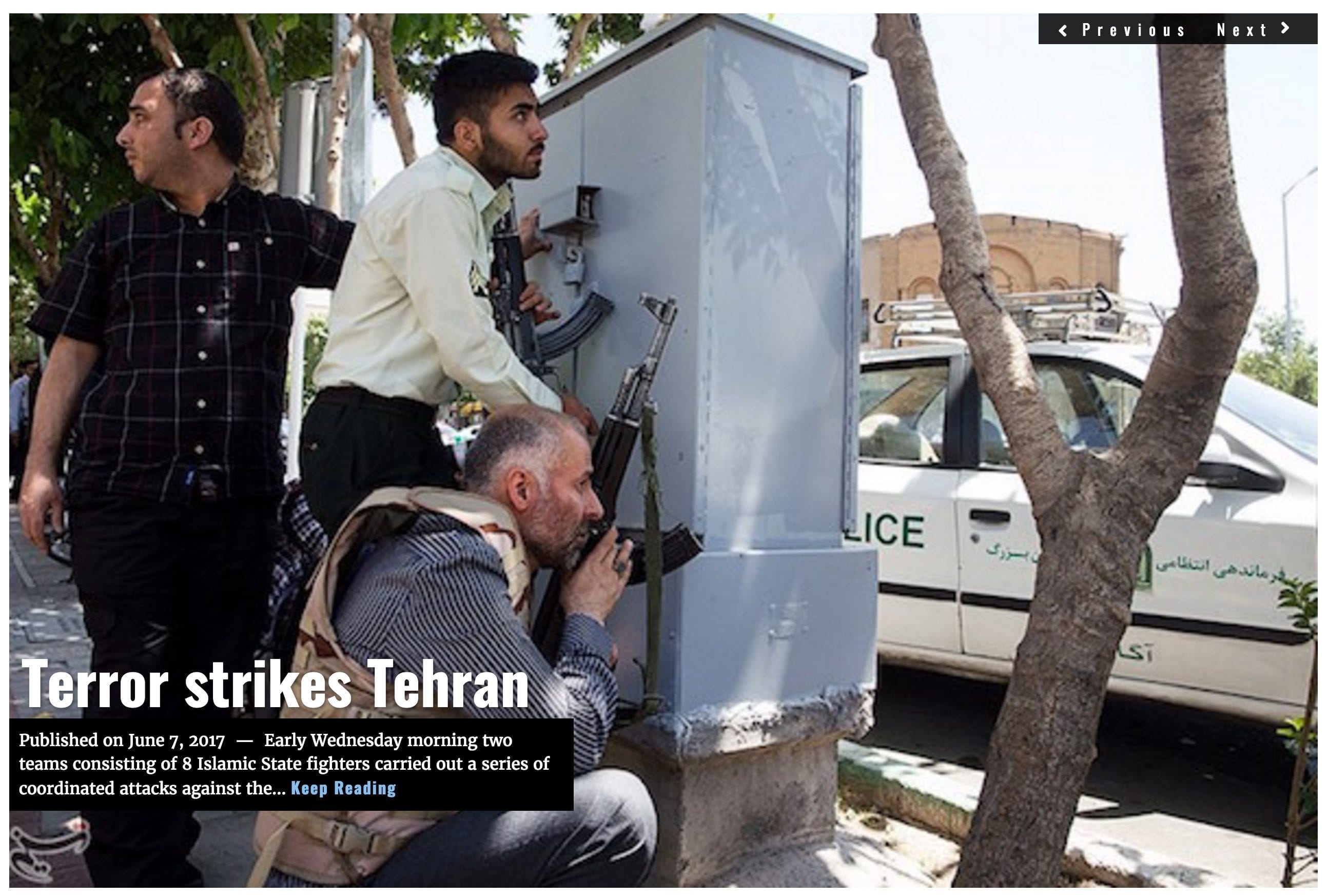

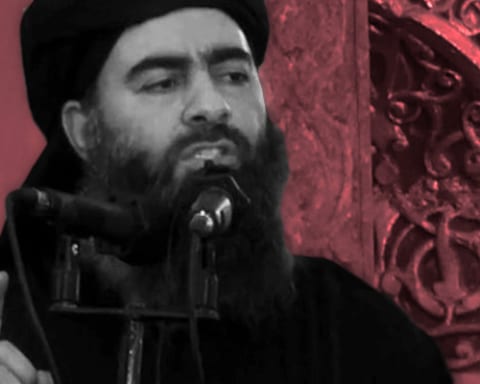
![Image Leaving Syria - a misstep continues to haunt America's allies [Lima Charlie News][Photo: JOSHUA ROBERTS]](https://limacharlienews.com/wp-content/uploads/2019/01/Leaving-Syria-a-misstep-continues-to-haunt-Americas-allies-Lima-Charlie-News-480x384.png)
